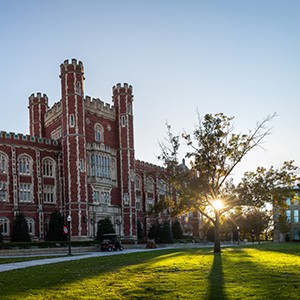An interactive website of the Classen Ten Penn neighborhood in Oklahoma City created by an interdisciplinary team at the University of Oklahoma recently was placed in the top 6 percent of initial applications submitted for ArtPlace America’s 2016 National Creative Placemaking Fund.
Representatives of ArtPlace America short-listed the Placemaking Toolset project proposed by the OU College of Architecture-led interdisciplinary team from over 1,361 initial applications, making it one of 80 projects that will be considered for the National Creative Placemaking Fund.
The Placemaking Fund is a highly competitive national program that invests money in communities across the country in which artists, arts organizations and arts activity will help drive community development projects addressing challenges or opportunities related to agriculture and food; economic development; education and youth; environment and energy; health, housing; immigration; public safety; transportation; or workforce development.
OU College of Architecture faculty members Deborah Richards and Hans Butzer, along with Chris Weaver of the College of Engineering, proposed the Placemaking Toolset, the purpose of which is to identify placemaking opportunities and guide future development in the Classen Ten Penn neighborhood.
The Placemaking Toolset is an interactive website with a cultural asset map, discussion page and reference materials for the neighborhood. This asset map is unique because it will include existing data sources and maps that will be integrated with community-sourced information. Once the asset map is built, artists will be invited to participate in working with the cultural asset map and in person with community members to imagine possible artistic and cultural interventions to help the community physically define its sense of identity and place.
The design process between the artists and community will be iterative, allowing for discussion both online and in person. The Placemaking Toolset will be available to all residents in the Classen Ten Penn neighborhood, giving each resident a voice in shaping the identity of the community and built environment. A separate source of funding will be required for the construction of the proposed artistic interventions.
As the next step in ArtPlace’s process, OU will submit more extensive application materials and schedule a site visit with an ArtPlace staff member and a national peer expert for summer 2016. ArtPlace will convene these peer experts for an in-person panel meeting this fall and will then announce the final projects in which it will invest a total of $10.5 million in December 2016.
About the University of Oklahoma Applicants
Deborah Richards is a Bruce Goff Chair of Creative Architecture and Hans E. Butzer is the interim dean of the College of Architecture. The Division of Architecture has a long history of both faculty and students proposing projects in Oklahoma City that have catalyzed actual development and placemaking projects in the city. In the fall of 2015, the College of Architecture opened the Community Design Center, located in downtown Oklahoma City, to better facilitate collaboration between the university and Oklahoma City neighborhoods.
Chris Weaver is an associate professor in the School of Computer Science. His interests are broadly in information visualization and visual analytics, with a focus on software architectures, design languages and user interfaces for richly interactive visual querying of data. He is particularly interested in the application of visualization techniques to learning and scholarship throughout the humanities.
About ArtPlace America
ArtPlace America (ArtPlace) is a 10-year collaboration among 16 partners foundations, along with eight federal agencies and six financial institutions, that works to position arts and culture as a core sector of comprehensive community planning and development in order to help strengthen the social, physical and economic fabric of communities.
ArtPlace focuses its work on creative placemaking, which describes projects in which art plays an intentional and integrated role in place-based community planning and development. This brings artists, arts organizations and artistic activity into the suite of placemaking strategies pioneered by Jane Jacobs and her colleagues, who believed that community development must be locally informed, human-centric and holistic.
####



